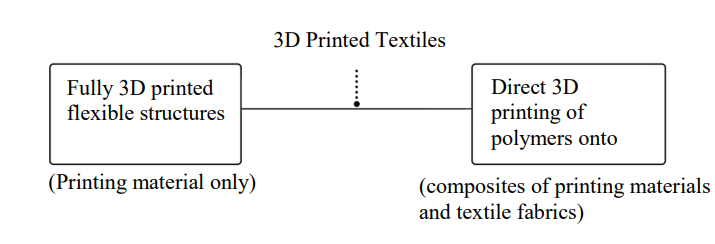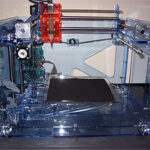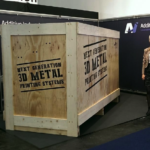

3D printing and materials are an intertwined science, and one that many researchers, engineers, and manufacturers put a lot of research and development into today—all working toward the goal of perfecting production. In ‘Design for Material Extrusion on Mesh Fabrics,’ UK researchers delve more specifically into the use of ‘off-the-shelf’ PLA for mesh fabrics created via FDM 3D printing. Their study was created for the purpose of helping designers understand more about the complexities of progressive fabrication techniques and specifically, issues in adhesion.
Additive manufacturing and 3D printing offer huge opportunities for fashion designers to innovate, and produce an infinite array of patterns and textures, along with complex geometries as desired. The researchers categorize 3D printed textiles as either fully 3D printed and flexible or 3D printed polymers that have been placed on textile fabrics as an addition afterward. Because fashion design is such an artistic endeavor, 3D design and printing are an enormous technological complement, allowing for innovation that may not have been possible before. The researchers explain that 3D printing offers new applications for the following:
- Individualized garments production
- New textile functionalization
- Multi-material composite explorations
- Development of new techniques
- More sustainability in materials for the industry overall
Advanced studies are needed, however, to address and conquer numerous challenges that other users are continually battling such as diminishment of mechanical properties, adhesion issues, finishing processes, and more. Here, samples were created with Prusa PLA, using a Prusa i3 MK3 printer. The researchers experienced challenges as the first sample was found to be extremely poor in terms of adhesion and stability, but the second one was much more positive.
The research also uncovered data regarding porosity, showing that larger pores resulted in a better intermolecular bond between layers, with PLA-F1 and PLA-F3 offering larger pore sizes. The team also found that in 3D printing on mesh, many adhesion issues can be prevented as they present ‘opening gaps’ for firm adhesion measures; however, lower ‘stretch-ability’ allows better adhesion consistency too.

Ultimately, the study showed that laminating fabric in between two polymer layers is the secret to creating a bond, with form-locking connections, working well with the following:
- Large pore size
- Loose weave structure
- Low weft
- Stitch density
Surface properties are important, along with chemical properties and the makeup of the substrate. Previous research has also shown that polymers have better adherence success on:
- Cotton
- Polyester
- Wool
- Viscose
“Regarding 3D printing settings, an optimum z-distance height provides the best polymer-textile adhesion. The risk of print failures increases when the z-distance was not set properly. 3D printing at a higher temperature of 5 – 10°c from suggested filament temperature reduce the viscosity of the printing material which allow the extruded material to penetrate deeper into the woven fabric,” concluded the researchers.
“Experiment results showed that the printing speed and polymer flow have no substantial impact on the adhesion force, but it is recommended to print at a slower speed of 20 – 22.5mm/s and 100% flow rate for slightly better adhesion result. Future work will extend the study of interface adhesion of 3D printed polymers on textile fabric using microscopic images, testing on washing cycles and explorations of new materials for 3D printed textiles.”
3D printing has been an enormous boon for designers around the world, as well as users interested in using materials and textiles for manufacturing purposes. In fashion, we have seen 3D meld into the next dimension with the 4D Kinematics dress, to entire collections including jewelry and shoes, and a variety of new materials and inks. What do you think of this news? Let us know your thoughts! Join the discussion of this and other 3D printing topics at 3DPrintBoard.com.
[Source / Images: ‘Design for Material Extrusion on Mesh Fabrics’]
When it comes to 3D real estate visualization in the USA, our service provides the perfect solution for bringing property listings to life. Through our platform, you can easily access cutting-edge 3D renderings that showcase your real estate projects in a way that attracts potential buyers and investors. Whether it's residential, commercial, or mixed-use properties, our team of experts uses advanced technology to create immersive visualizations that highlight the best features of your property, making it easier for clients to imagine the space as their own.
Through our website, you can quickly get high-quality 3D real estate visualizations that are tailored to your specific needs. With our help, you'll stand out in the competitive real estate market by offering potential buyers a realistic, interactive view of your property. Our efficient process ensures a fast turnaround time, while our attention to detail guarantees that every aspect of the property is represented accurately, giving you a powerful marketing tool to promote your real estate listings.






